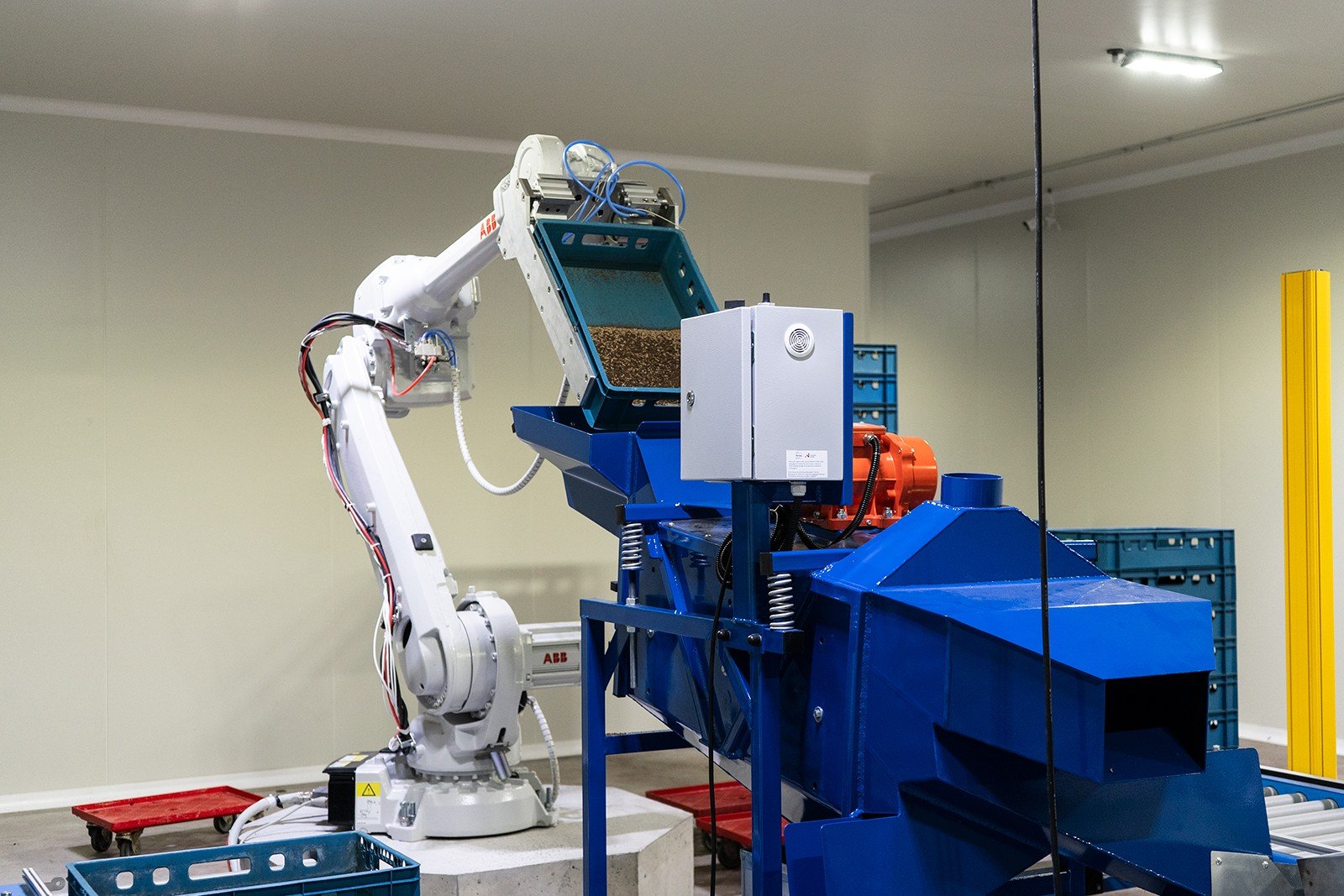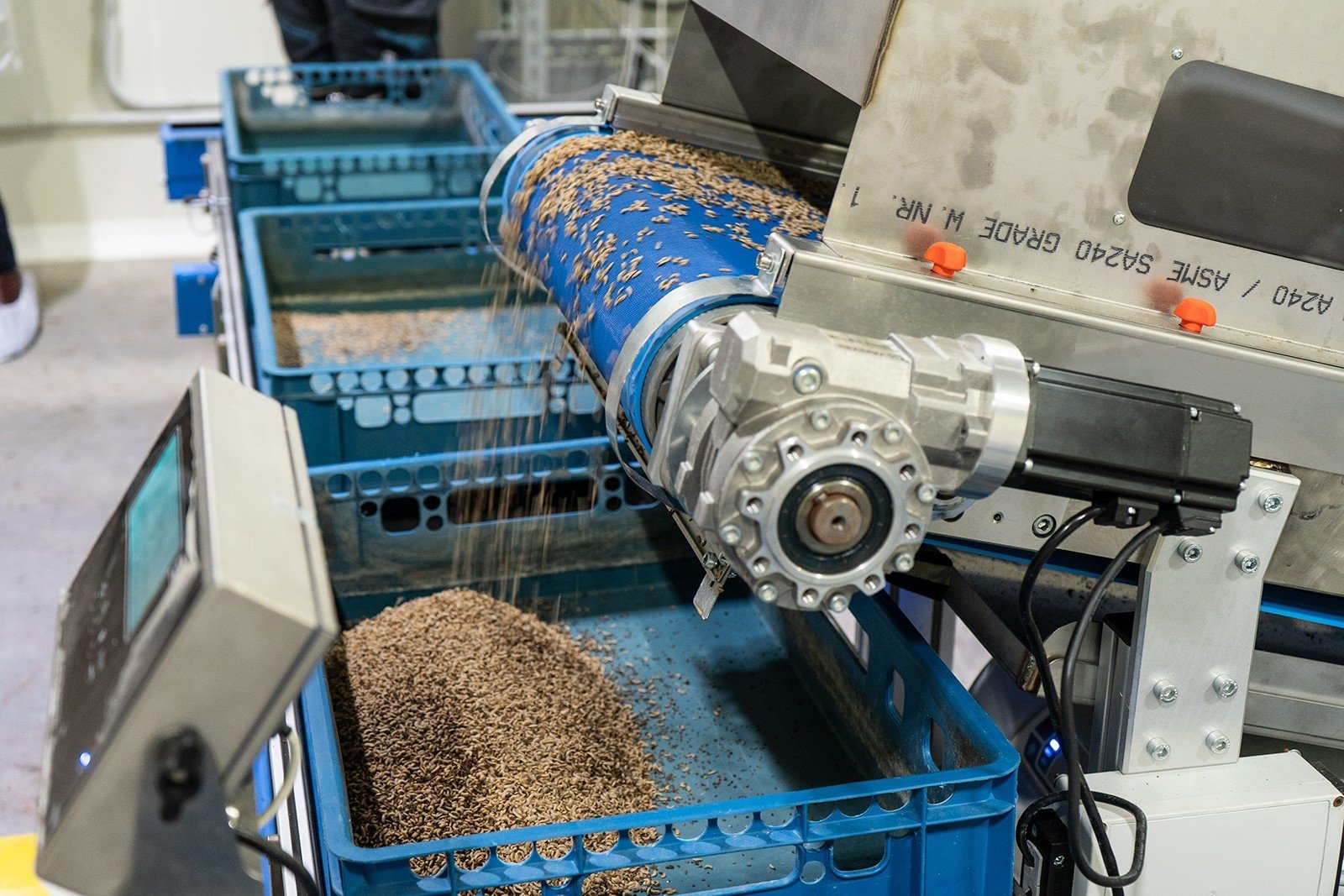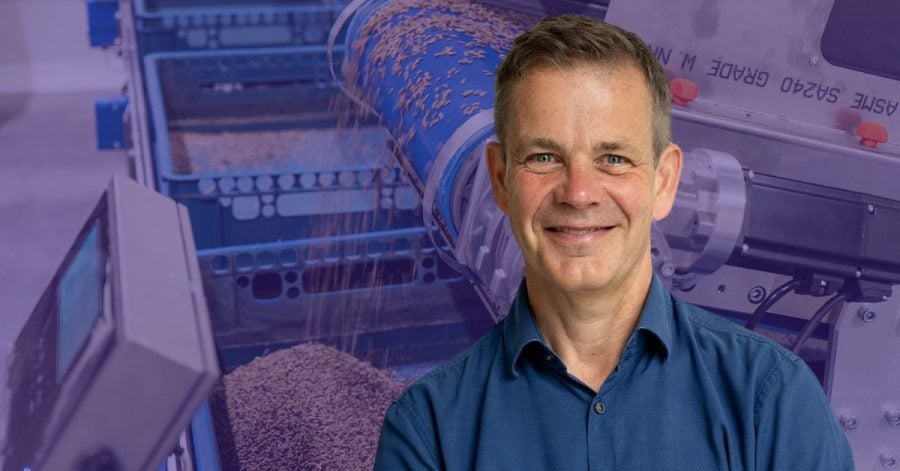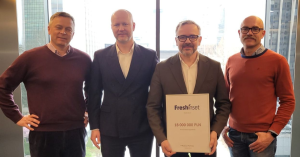Xavier Marcenac first came to Bulgaria in the early 90s, as the country was making its first timid steps towards free market. “My wife told me I am mad because all the Bulgarians were leaving the country and I came back to start a business”, he shared in The Recursive’s podcast episode two years ago. After years in the BPO market, establishing one of the first companies in the sector, he successfully sold his business to TELUS International.
Back in 2019, it was time for another challenge with a focus on the biotechnology market. Xavier founded Nasekomo, together with Marc Bolard and Olga Marcenac, a startup converting organic waste into high-value animal protein through the use of insects, more specifically hermetia illucens, known as the black soldier fly. Since the late 20th century, the insect has been gaining attention because of its usefulness for recycling organic waste and generating animal feed, which is the main sector for Nasekomo.
Ambitious, but realistic goals
- Nasekomo plans market expansion by adopting a franchise business model with a partner beginning operations in 2025.
- 100 bioconversion factories by 2030 – ambitious, but realistic goal, according to their analysis.
- The significance of the environmental impact is an essential term for Nasekomo’s company drive. Discover more about this aspect and gain valuable insights in The Recursive’s interview with Xavier Marcenac!
What are the key milestones that Nasekomo aims to achieve in 2024?
There are quite a few milestones for us. The first one is the ramp-up of the current facility to get to a significant level of production. This is the demo center for Nesekomo technologies, but we want to show that everything is working well and at scale.
As a second milestone, we would like to further develop the technology. Specifically, we are working on automating the production center.
At the moment, we are working with a number of partners. Siemens is one of them, for example. This project is supported with a grant from the Bulgarian Ministry of Innovation and Growth, awarded under the “Seal of Excellence” in recognition of the exceptional quality of our work.
The third milestone we have in front of us is working on the deployment of the first franchising unit in Bulgaria with a local partner. We are already moving in this direction.
You mentioned Siemens, how do you approach your strategic partnerships?
We are trying to make sure we choose the right partner to adapt and to connect to our company and to our needs. We decided, a few years ago, to work with Grimo, a French company, one of the world-leading ones in this industry, for the genetic selection side. Their interest in partnering with us was fueled by our expertise in the black soldier fly and its characteristics.
Collaboratively, we are constructing a highly impactful consortium with expertise in the field of fly genetics, particularly focusing on genetic selection for the black soldier fly.
Other kinds of partners, that we are looking for, are technology partners. About two years ago, we started to unite with professionals from Siemens and their competitors.
Siemens was very proactive in this move, bringing competence to the partnership, as a leading company in engineering, with the aim to invest in the insect industry. Also, they have a strong local team and that was also a reason to start working together.
We are currently in a discussion with several companies on the manufacturing partnership side and we will continue to look for the right partnerships.
You have managed to raise your Series A in a difficult macroeconomic environment. Can you share some insights from your fundraising strategy that could be helpful for other deep tech startups?
Yes, the current times are difficult, and as we all know, the last two years have been kind of catastrophic for most of the industries.
It is not easy to raise money. We are approaching a lot of investors. They would like to see companies showing raw profitability to break even.
Clearly laying out the reasons behind your economic decisions, detailing the steps you’re taking, and showing the path to break even helps build trust and makes it easier for investors to understand and support your business.
This is the most important advice I could give today.
Nasekomo is planning to launch its first franchised factory in Bulgaria in 2025. Can you share more on the business model, and how you see it impacting the company’s growth?
We decided we will go for the franchising model about 3-4 years ago, as a way to grow quicker and exponentially, because we are a significantly small company and the industry has immense potential.
We are also based in a geographical location, where access to capital is quite complex due to a couple of reasons – the region, and the economic conditions in the past two years. We looked at our strategic competition, they are based mainly in France, and the Netherlands, with substantially developed factories.
We decided we can not compete with them, and we have to find another way. The insect industry is similar to others, in terms of structure, and has considerable potential, yet it requires substantial capital expenditures – resources that we currently lack. Therefore, we decided to start looking for partners.
So what do we do? We developed a model, identifying franchisees who secure the necessary capex to access the biomass required for the transformation into insect larvae biomass.
Nasekomo is bringing a number of things to the potential franchisee. We contribute our industry expertise, introduce technology related to insect bioconversions, and provide the essential young larvae required for the bioconversion process.
You can imagine the franchisee is, for example, the Coca-Cola bottling company, they buy machines from Coca-Cola and the syrup. They bottle it and sell it under the Coca-Cola brand. Our approach is quite similar. You purchase the machines, along with the know-how from us. You can then choose to sell the end product under our brand, and we’ll take a commission. Alternatively, you have the option to sell it under your own brand, and that’s acceptable too.
Nasekomo has plans to operate 100 bioconversion factories by 2030. What challenges do you predict in achieving this goal, and how do you plan to overcome them?
We believe in the market potential, therefore 100 is a realistic number.
We conducted an analysis to identify potential replacements in aqua food, pet food, and other markets, estimating 15M tons per year. It is what we call a total addressable market.
Looking more closely at specific markets, the anticipated demand would be 3 million tons by 2030, but the current supply is only half a million tons. Therefore, we need people to meet this demand, and they potentially are our franchisees. We reach out to people with a lot of biomass, via biofactories, and milling factories. Everyone who is transforming agro-products as a co-product that could be used as a feed to the insects.
Consider what you typically do with your co-products. If you sell them, you might get a certain value. However, by utilizing our technology, you could potentially sell them for five times that amount. It has a sufficient impact on your bottom line. There is an investment, but there is a return.

Can you elaborate on how you deploy robotics and AI to your factories?
We are using robotics to improve the process flow and reduce labor. We have different kinds of robots – exporting goods, and taking care of neonate larvae.
Also, we have a type of robot that manages the roles of the insects. Specifically, we deployed specialized industry robots that are multifunctional and capable of managing the entire growth process of the insects, spanning a period of 7 days.
We integrate cameras and capacitive sensors to measure factors such as humidity, temperature, pH, and gas levels. This enables us to gather comprehensive data. These robots are designed not only to collect data but also to perform various tasks, such as mixing substrate with the larvae. In a few words, that represents the robotics aspect of our system.

As we collect a substantial amount of data, we use it to enhance the conditions for the larvae with machine learning. This information integrates into algorithms that analyze conditions from three days prior, providing insights such as the need to add water in specific locations. The robots then autonomously adapt to these insights, incorporating the necessary adjustments. Although we are in the early stages of development, we are actively working on a cloud-based platform to collect and utilize the increasing amount of information.
Currently, we are developing everything on a Google platform, and we are in a discussion about getting the support of their data scientists.
Do you have data on what is the current impact that you are providing for the markets where Nasekomo’s products are accessible?
Impact is a very important term for us. We conduct a life cycle analysis (LCA) in collaboration with one of our team members associated with the University of Utrecht in the Netherlands.
Through the LCA, we assess the environmental footprint of our production, comparing it to similar products on the market. Our primary focus is on the pet food industry, as it is our main current end customer. This is a significant market, experiencing rapid growth, already using insect protein. The aqua industry represents another important sector for us. In our life cycle analysis, each ton of protein we produce has the potential to offset 9 tons of CO2 emissions.








